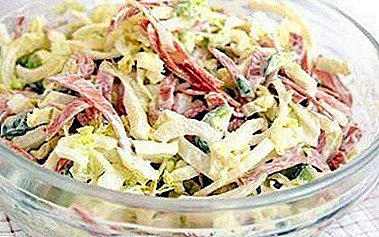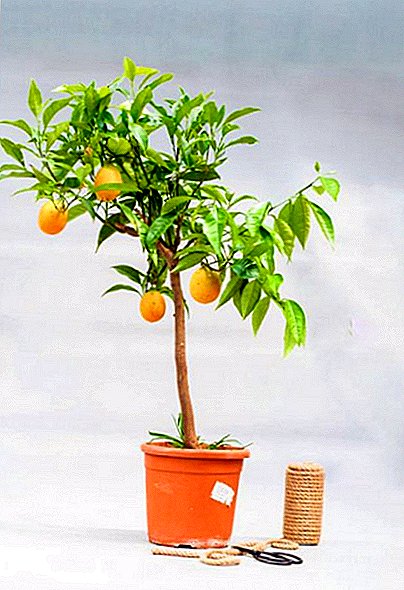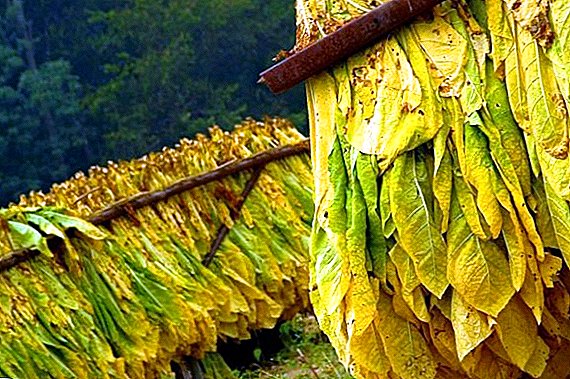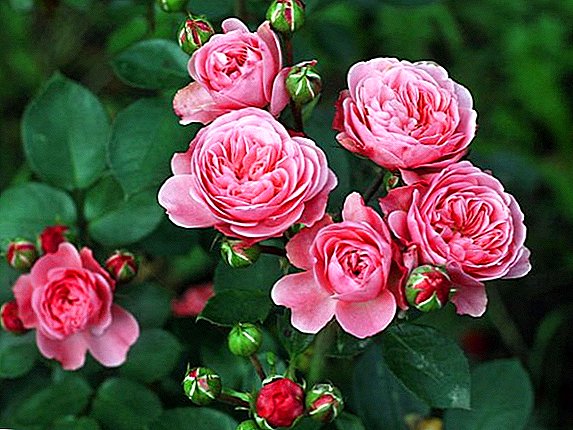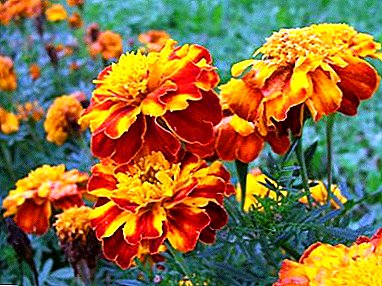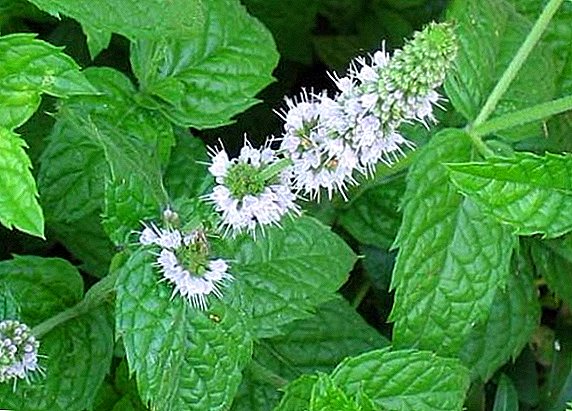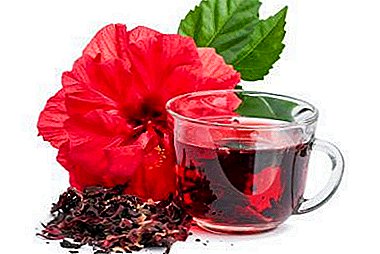
Hibiscus is a plant from the family Malvaceae with large flowers that not only look beautiful on trees, but also have great taste and are very good for health. A decoction of sheets of this tree were treated in antiquity in the East and in Egypt.
So what is the use of a Sudanese rose and can a flower be harmful to health? Also in the article you can find out the answers to various questions, for example, what is a gibicus, does a flower raise or lower pressure, is it possible to use a plant for pregnant women and how is it generally useful?
How does it affect a person: medicinal and beneficial properties of flowers
Hibiscus contains in its composition anthocyanins, which strengthen the walls of blood vessels, cleanse them of cholesterol deposits and help to reduce blood pressure, as well as flavonoids, which help cleanse the body of toxins, heavy metals and metabolic products.
It is used as a mild diuretic, choleretic and laxative, it invigorates and tones, boosts immunity, normalizes digestion and even keeps the body young due to its antioxidants.
Thanks to flavonoids and phenolic acids that protect the body from the harmful effects of free radicals, hibiscus petal tea is good for hypertensive patients.
According to an experiment conducted by American scientists, there was a decrease in pressure of 6-13% among the participants, who a month and a half drank hibiscus tea three times a day.
 As for the chemical composition, it includes:
As for the chemical composition, it includes:
- flavonoids;
- phenolic acids;
- anthocyanins;
- antioxidants;
- vitamins C, B2, A, B5, PP B12;
- macronutrients: phosphorus, calcium, magnesium, potassium, sodium;
- organic acids - citric, malic, tartaric, linoleic;
- pectin substance;
- captopril;
- beta carotene.
Can it hurt?
It is important to understand that, Despite the many beneficial and healing properties, hibiscus has contraindications.
- It can cause allergic reactions if the person has an individual intolerance.
- It increases acidity, therefore, with increased acidity of the stomach and acute gastrointestinal problems such as ulcers, acute gastritis, pancreatitis, it can not be used.
Pregnant women should be careful with the use of this drink! Due to the high content of vitamin C, it helps to improve the tone of the uterus and can cause uterine contractions, which threatens to terminate the pregnancy.
Expectant mothers should consult a doctor before using this plant, and brew it in blend with regular tea, berries, fruit, do not make the infusion too strong.
If you follow these rules, the infusion may even be useful due to its invigorating properties, because often the breakdown accompanies women throughout pregnancy, and since coffee is not the best option in this position, herbal tea can be a great alternative. In addition, thanks to the sweet and sour taste of hibiscus can help a woman cope with morning toxemia.
Important! It is not recommended to use the drink for children under 5 years. Kids more adults are prone to allergic reactions, besides it is difficult to predict what effect this plant will have on the developing organism.
A photo
Then you can see the photos of the plant:





Indications for use, recipes
Let us dwell on the healing properties of hibiscus and recipes for its use. Choose sheets that have been dried completely, and not in the form of small pieces or powder.
For internal use
- If you have problems with appetite, breakdown, vitamin deficiency It is necessary to brew karkade at the rate of 1.5 teaspoons per 1 cup of water. Drink cold or hot three times a day. If desired, you can add dried animal, lime blossom, dried or fresh black chokeberry or blueberry, which will increase the tonic properties of tea.
- With colds and other infectious diseases brew 2 teaspoons of leaves for 1 cup of water, leave for 20 minutes, add a spoon of honey and, if desired, a spoon of raspberry jam or dried raspberry berries. Drink hot twice a day.
- If you have problems with pressure infusion of Sudanese rose has a truly miraculous properties. In the form of heat it is useful hypotonia, and in the cold will help hypertensive patients. You need to pour 1 teaspoon of dried flowers to 1 cup of boiling water, insist 7-10 minutes and use it three times a day in a warm or cold form, depending on the need to increase or decrease pressure.
- To enhance immunity It is necessary to brew two tablespoons of hibiscus, mix with a pinch of dried mint and lemon balm, pour 400 ml of boiling water, insist half an hour in a closed lid of the container and drink 200 ml of this infusion twice a day.
- To cleanse the body of toxins and combat constipation It is necessary to brew 1 tablespoon of petals with 1 cup of boiling water, leave for 10 minutes and drink warm in the morning on an empty stomach. You can have breakfast 40 minutes after taking the infusion.
- To calm the nervous system and improve sleep It is necessary to brew 1 tablespoon of hop cones and 1 tablespoon of hibiscus in a glass of boiling water, drink at night for a glass. This recipe will help fight insomnia.
- To get rid of internal parasites Pour 2 tablespoons of flowers 150 gr. boiling water and leave to insist on all night. In the morning, strain and drink on an empty stomach. Repeat 4 times in a row. It must be remembered that this treatment should be carried out after consulting a doctor, especially if you want to treat the child like this.
- Slimming You need to pour 1 teaspoon of carkade with a glass of water at room temperature, insist for 1 hour, strain and drink 1 glass 3 times a day. Such a drink normalizes metabolism, reduces appetite and speeds up the process of splitting carbohydrates.
On the beneficial properties of karkade tea, see the video below:
For external
In addition to the use of teas and tinctures, carcade can be used as a caregiver in home facial and body treatments.
 Mask for oily skin.
Mask for oily skin.- Mix 2 tablespoons of hibiscus and 2 tablespoons of chopped oatmeal.
- Dilute with a small amount of warm water.
- Massage into face and leave for 15 minutes, then rinse with water.
Apply 2 times a week.
- Mask for dry skin.
- Pour 1 teaspoon of boiled water karkade, insist 10 minutes, add 2 tablespoons of honey, cool.
- Apply on face for 15 minutes, then rinse.
With this recipe, you must be careful of women with sensitive skin, allergy to honey is possible.
- For toning the skin, getting rid of irritation, acne, excessive oily skin.
- It is necessary to make a decoction of 2 tablespoons of flowers and a glass of boiling water, strain and freeze in forms for ice.
- Wipe face, neck and décolleté with one cube every morning for maximum effect.
- Mask to rejuvenate the skin and get rid of wrinkles.
- Put the steamed sheets of hibiscus on gauze and apply the resulting compress on the face, neck, décolleté area.
- Keep for 20 minutes, use once a week.
A similar compress can also be used for the area around the eyes to relieve swelling. The procedure time in this case should be 10-15 minutes.
- Toning body scrub.
- Steam 3 tablespoons of petals, mix them with 2 tablespoons of ground coffee.
- Massage into body.
- Wash off with water.
This scrub can reduce the appearance of cellulite, tighten the skin. Do not use for face!
- Scratches, abrasions, light skin lesions take steamed petals, mix in equal proportion with honey, apply on damaged skin for 20-30 minutes.
- For the treatment of weeping eczema It is necessary to apply a pulp of steamed flowers on eczema for 30 minutes.
 Conditioner for greasy hair.
Conditioner for greasy hair.- Pour a small handful of leaves on 1 liter of boiling water.
- Insist (preferably in a thermos).
- Rinse hair after each wash, do not rinse.
- Dandruff hair mask.
- Infuse 2 tablespoons of hibiscus in a glass of boiling water.
- Add 3 tablespoons of sea salt, two yolks of chicken eggs and one tablespoon of vegetable oil (jojoba, peach, apricot kernels).
- Apply to the scalp, wrap in a towel, hold for 30 minutes, then rinse thoroughly with water.
Apply twice a week.
Hair products based on hibiscus may have a slight coloring effect. And if brunettes or brown-haired women just give extra shine and beautiful highlights, then blondes can dye their hair a pinkish shade.
We treat hair with hibiscus: more in the video below:
- Diseases and pests of hibiscus.
- Types and varieties of hibiscus.
- Caring for hibiscus.
- Reproduction and cultivation of hibiscus.
- Features flowering hibiscus.
- Can I keep hibiscus at home?
- What are the differences between hibiscus and hibiscus?
As we see, the ancient "drink of the Pharaohs" is incredibly useful for modern man. But it is important to remember that moderation and a sound approach are needed in everything: follow proven recipes, start with small dosages and focus on your own well-being, so that using this miraculous flower will bring you only benefit and pleasure.


 Mask for oily skin.
Mask for oily skin. Conditioner for greasy hair.
Conditioner for greasy hair.
